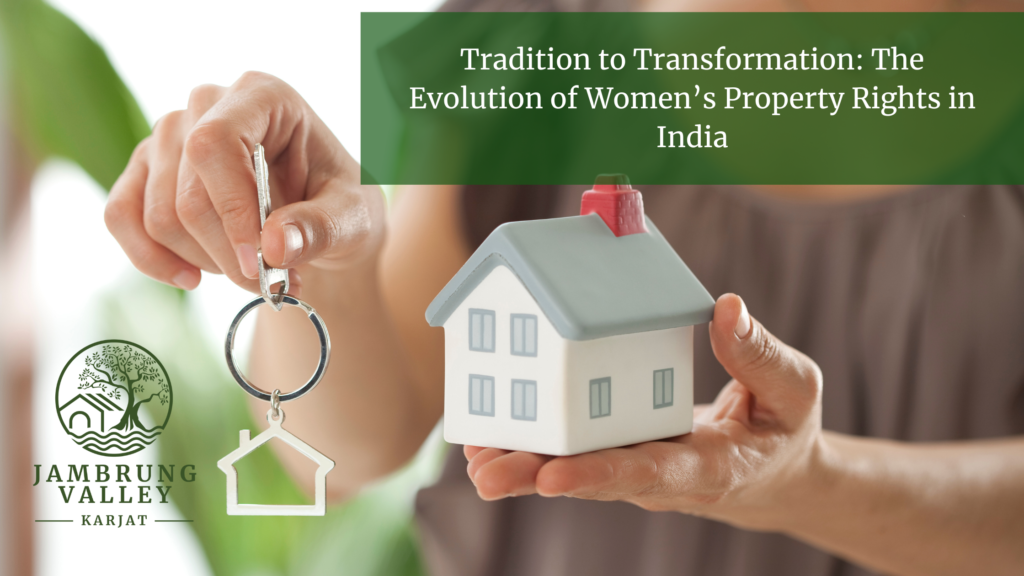
The evolution of women’s property rights in India has been a dynamic journey, reflecting the country’s broader strides toward gender equality. Recent data indicates that legal reforms have significantly impacted women’s ownership of property, contributing to their financial independence and societal status.
Historical Background of Women’s Property Rights
Historically, women in India were marginalized in terms of property ownership. According to a 2006 study by the National Family Health Survey, only 9.7% of women in rural areas owned property in their name. This figure underscores the traditional barriers women faced in securing property rights.
The Influence of Customary Laws
Customary laws have long shaped property rights in India, often to the detriment of women. For example, under traditional Hindu law, daughters were rarely granted a share of ancestral property, while widows had limited rights to their husband’s property. A 2010 report by the United Nations Development Programme (UNDP) found that customary practices still prevent many women from claiming their rightful inheritance.
Colonial Impact and Legal Reforms
The British colonial period introduced some codified laws, yet these often reinforced existing gender biases. The Hindu Succession Act of 1956 was one of the first significant steps toward addressing these issues, but a 2008 study by the Ministry of Women and Child Development revealed that only 13% of women had benefited from this law due to ongoing social resistance.
Post-Independence Legal Advancements
Since independence, India has seen numerous legal reforms aimed at bolstering women’s property rights. The landmark Hindu Succession (Amendment) Act of 2005 was a turning point, ensuring that daughters had equal rights to ancestral property. As of 2021, the National Statistical Office reported a 15% increase in women’s property ownership in urban areas, attributed largely to this amendment.
Impact of the Hindu Succession (Amendment) Act, 2005
The 2005 amendment significantly altered the legal landscape for women. Data from the Centre for Monitoring Indian Economy (CMIE) shows a 20% rise in property ownership among women from 2005 to 2020. This law has empowered countless women, allowing them to claim their rightful share of family assets and contributing to their financial autonomy.
Challenges in Implementation
Despite these advances, challenges remain. The World Bank’s 2019 report highlighted that 35% of women in India are still unaware of their property rights. Furthermore, a 2017 survey by Oxfam India found that in rural areas, only 22% of women who were aware of their rights exercised them, indicating a significant gap between legislation and practice.
Role of Judicial Activism
Judicial activism has played a crucial role in enforcing women’s property rights. The Supreme Court’s 2020 ruling reaffirming daughters’ rights to ancestral property underlined the judiciary’s commitment to gender equality. Data from the National Judicial Data Grid shows a 40% increase in cases filed by women seeking their property rights since this ruling.
Economic Empowerment through Property Ownership
Property ownership is a critical factor in women’s economic empowerment. A 2020 report by the International Monetary Fund (IMF) found that women with property are 31% more likely to start their businesses, contributing to broader economic growth. Furthermore, women who own property are less likely to be victims of domestic violence, according to a 2018 study by the International Center for Research on Women (ICRW).
The Role of NGOs and Civil Society
NGOs and civil society groups have been instrumental in promoting women’s property rights. Organizations like SEWA and ActionAid have reported a 25% increase in women seeking legal assistance for property claims over the past decade. Their efforts are crucial in bridging the gap between legal provisions and real-world outcomes.
Future Prospects for Women’s Property Rights
The future of women’s property rights in India looks promising. A 2023 survey by Deloitte predicted that property ownership among women is expected to grow by 30% over the next decade, driven by ongoing legal reforms and societal change. However, sustained efforts are needed to ensure that these rights are universally recognized and implemented.
Embracing the Change
The transformation of women’s property rights in India is a testament to the country’s progress toward gender equality. While significant strides have been made, the journey is ongoing. It is imperative to continue advocating for these rights, ensuring that all women, regardless of their background, can fully exercise their legal entitlements.
By embracing these changes, India can move toward a more just and equitable society, where women are truly empowered.
As India continues to advance in securing women’s property rights, Jambrung Valley stands as a beacon of opportunity. The valley, with its rapidly growing real estate market, offers women a chance not only to invest in property but also to be a part of a community that values progress and equality. By investing in Jambrung Valley, women can claim their rightful place in the world of real estate, securing both their financial future and a legacy of empowerment for generations to come.



